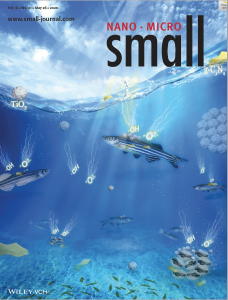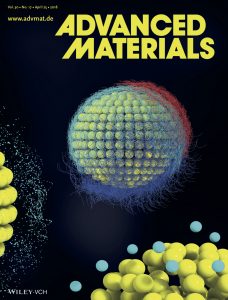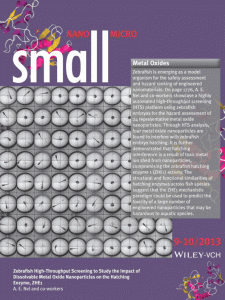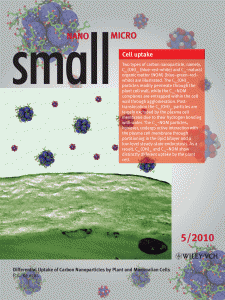Book Chapters
3. Lee, S.L.J and Lin, S. Advancements in a Zebrafish Model for Toxicity Assessment of Nanomaterials, Advances in Toxicology and Risk Assessment of Nanomaterials and Emerging Contaminants, Springer, Chap 5, 2022. Chapter link.
2. Ke, P.C., Lin, S., Reppert, J. Rao A.M. and Luo, H. Uptake of Nanoparticles in Mammalian Cells and Plants, Handbook of Nanophysics, Taylor & Francis, Chap 30, 2010. Chapter link.
1. Salonen, E., Lin, S., Ke, P.C. The Biophysics of Nanomaterials in Living Systems, for Progress in Nanoparticles Research, Nova Science Publishers (New York), Chap 13, 2008.
Peer-reviewed articles
105. Wu, S., Peng, J., Jiang, Y. and Lin, S.* The overlooked promotional effects of alcohols to BiOBr catalysts in photocatalytic degradation of organic pollutants. Chinese Chem Lett 2025, Just Accepted.
104. Wang, Y., Qiao, R., Zheng, X., Wu, W., Yang, H., Lee, S., Peng, J., Rong, J., Li, W., Luo, W. and Lin, S.* Constructing high-biosecurity MoS2-based anodes for rapid and efficient lithium storage. Nano Res 2025, 18, 94907186. Article link.
103. Trophic transfer of carbon-14 from algae to zebrafish leads to its blending in biomolecules and the dysregulation of metabolism via isotope effect. National Science Review 2025, 12, nwae346. Article link.
102. Wu, X., He, F., Xu, X., Wu, L., Rong, J. and Lin, S.* Environmental health and safety implications of the interplay between microplastics and the residing biofilm. Environment & Health 2025, 3, 118-132. Article link. Front Cover .

101. Wu, S., Peng, J., Lee, S., Niu, X., Jiang, Y. and Lin, S.* Let the two sides of the same coin meet - Environmental health and safety-oriented development of functional nanomaterials for environmental remediations. Eco-Environment & Health 2024, 3, 494-504. Article link.
100. Wang, N., Dong, G., Qiao, R., Yin, X. and Lin, S.* Bringing artificial intelligence into environmental toxicology studies: a perspective of AI-enabled zebrafish high throughput screening. Environ Sci Technol 2024, 58, 9487-9499. Article link. Supplementary Cover.
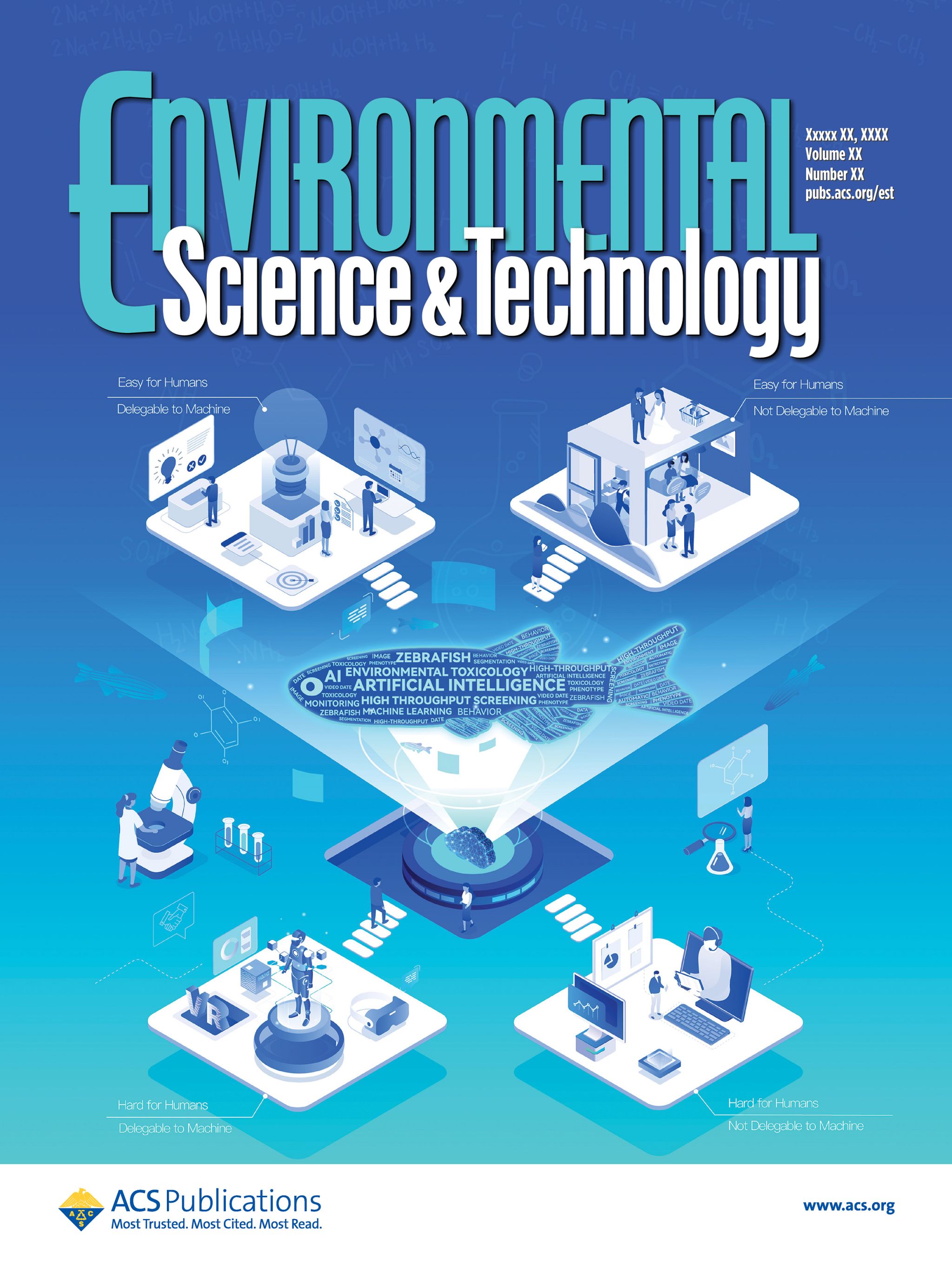
99. Rong, J., Yuan C., Yin, X., Wu, X., He, F., Wang, Y., Leung, K.* and Lin, S.* Co-exposure of polystyrene nanoplastics and copper induces development toxicity and intestinal mitochondrial dysfunction in vivo and in vitro. Sci Total Environ 2024, 930, 172681. Article link.
98. He, F., Wu, X. and Lin, S.* Adverse outcome phenomena and toxicity mechanisms of micro- and nanoplastics in human health. Nano LIFE 2024, 14, 2440003. Article link .
97. A molecular extraction process for vanadium based on tandem selective complexation and precipitation. Nature Commun 2024, 15, 2614. Article link.
96. Li, Q., Wen D., Qin, C., Qian Y., Fu, R. and Lin, S.* Physical, chemical, biological, and synergistic technologies for pesticide-contaminated soil. Reviews of Environ Contam Toxicol 2024, 262, 7. Article link.
100. Editorial - Special issue environmental and health impacts of two-dimensional nanomaterials. NanoImpact 2024, 33, 100491. Article link.
95. Peng, J., Jiang, Y., Wu, S., Cheng, Y., Liang, J., Wang, Y., Li, Z and Lin, S.* A nonradical oxidation process initiated by Ti-peroxo complex showed high specificity toward the degradation of tetracycline antibiotics. Chinese Chem Lett 2024, 35, 108903. Article link.
94. Study on leaching characteristics and biotoxicity of porous asphalt with biochar fillers. Transportation Research Part D: Transport and Environment 2023, 122, 103855. Article link.
93. Dong, G., Wang, N., Xu, T., Liang, J., Qiao, R., Yin, D. and Lin, S.* Deep Learning-enabled Morphometric Analysis for Toxicity Screening using Zebrafish Larvae. Environ Sci Technol 2023, 57, 18127-18138. Article link. Supplementary Cover.

92. 梁靖雨,肖开妍,何飞,陆志波,林思劼.* 低硫燃料油对斑马鱼早期发育阶段的毒性效应研究[J]. 环境化学 2023, 42(5)。
91. Jiang, Y., Shan, J., Law, J., Zhao, P., Tang, J., Peng, J., Wang, L., Leung, K., Sheng, W. and Lin, S.* In situ turning defects of exfoliated Ti3C2 MXene into Fenton-like catalytic active sites. Proc Natl Acad Sci 2023, 120, e2210211120. Article link.
90. Qiao, R., Mortimer, M., Richter, J., Rani-Borges, B., Yu, Z., Heinlaan M.,* Lin, S* and Ivask A.* Hazard of Polystyrene Micro- and Nanospheres to Selected Aquatic and Terrestrial Organisms. Science of the Total Environment 2022, 853, 158560. Article link.
89. Direct Recycling of Shorted Solid-State Electrolytes Enabled by Targeted Recycling. Energy Storage Materials 2022, 52, 365-370. Article link .
88. Root Hair Apex is the Key Site for Symplastic Delivery of Graphene into Plants. Environ Sci Technol 2022, 56, 12179-12189. Article link .
87. Anionic Nanoplastic Exposure Induces Endothelial Leakiness. Nature Commun 2022, 13, 4757. Article link. Featured in in a special collection in "Translational and Clinical Research" of the journal.
86. Chen, M., Li, M., Lee, S.L.J., Zhao, X. and Lin, S.* Constructing Novel Graphitic Carbon Nitride-based Nanocomposites - from the Perspective of Material Dimensions and Interfacial Characteristics. Chemosphere 2022, 302, 134889. Ariticle link.
85. Ji, X., Jiang, Y., Liu, T., Lin, S.* and Du, A.* MXene Aerogel-Based Phase Change Film for Synergistic Thermal Management Inspired by Antifreeze Beetles. Cell Reports Physical Science 2022, 3, 100815. Article link.
84. 李雯雯,覃彩蝶,林思劼.* 氧化石墨烯复合气凝胶吸附油类污染的应用基础研究[J]. 环境化学 2022, 41(6): 1869-1879。文章链接
83. Qin, C., Tang, J., Qiao, R. and Lin, S.* Tetracycline Sensitizes TiO2 for Visible Light Photocatalytic Degradation via Ligand-to-metal Charge Transfer. Chinese Chem Lett 2022, 33, 5218-5222. Article link.
82. Li, M., Li, P., Zhang, L., Chen, M., Tang, J., Qin, C., Lee, S.L.J. and Lin, S.* Facile Fabrication of ZnO Decorated ZnFe-layered DoubleHydroxides @ Biochar Nanocomposites for Synergistic Photodegradation of Tetracycline under Visible Light. Chem Eng J 2022, 434, 134772. Article link.
81. Dynamic Protein Corona of Gold Nanoparticles with An Evolving Morphology. ACS AMI 2021, 13, 58238-58251. Article link.
80. Nanotoxicology and Nanomedicine: The Yin and Yang of Nano-Bio Interactions for the New Decade. Nano Today 2021, 39, 101184. Article link.
79. Rong, J., He, Y., Tang, J., Qiao, R.X. and Lin, S.* “Fishing” Nano-Bio Interactions at the Key Biological Barriers. Nanoscale 2021, 13, 5954-5964. Article link.
78. Jiang, Y., Qin, Y., Yu, T. and Lin, S.* Synthesis of Sponge-Like TiO2 with Surface-Phase Junctions for Enhanced Visible-Light Photocatalytic Performance. Chinese Chem Lett 2021, 32, 1823-1826. Article link.
77. 李倩,杨璐,姜越,温东东,李梦雪,王潇潇,覃彩蝶,赵美,付融冰,张胜田,林思劼.* 农药生产场地土壤污染的化学氧化修复技术研究进展[J]. 生态与农村环境学报 2021,37,19-29。
76. Accelerated Amyloid Beta Pathogenesis by Bacterial Amyloid FapC. Adv Sci 2020, 7, 2001299. Article link.
75. Elevated Amyloidoses of Human IAPP and Amyloid Beta by Lipopolysaccharide and Their Mitigation by Carbon Quantum Dots. Nanoscale 2020, 12, 12317-12328. Article link.
74. Qian, Y., Qin, C., Chen, M. and Lin, S.* Nanotechnology in Soil Remediation - Applications vs. Implications. Ecotoxicology and Environmental Safety 2020, 201, 110815. Article link.
73. Uptake of Graphene Enhanced the Photophosphorylation Performed by Chloroplasts in Rice Plants. Nano Research 2020, 13, 3198-3205. Article link.
72. He, Y., Peng, G., Jiang, Y., Zhao, M., Wang, X., Chen M. and Lin, S.* Environmental Hazard Potential of Nano-Photocatalysts Determined by Nano-Bio Interactions and Exposure Conditions. Small 2020 16, 1907690. Article link. Back Cover. News highlight.
71. Peng, G., He, Y., Wang, X., Cheng, Y., Zhang, H., Savolainen, K., Madler, L., Pokhrel, S.* and Lin, S.* Redox Activity and Nano-Bio Interactions Determine the Skin Injury Potential of Co3O4-Based Nanoparticles towards Zebrafish. ACS Nano 2020 14, 4166-4177. Article link.
70. Shang, S., Lin, S.* and Cong, F.* Zebrafish Larvae Phenotype Classification from Bright-field Microscopic Images using a Two-Tier Deep Learning Pipeline. Appl Sci 2020 10, 1247. Article link.
69. Wang, X., Peng, G., Chen, M., Zhao, M., He, Y., Jiang, Y., Zhang, X., Qin, Y* and Lin, S.* Reduced Graphene Oxide Composites and Its Real-life Application Potential for in-situ Crude Oil Removal. Chemosphere 2020 249, 146121. Article link.
68. Enhanced Photoreductive Degradation of Perfluorooctanesulfonate by UV Irradiation in the presence of Ethylenediaminetetraacetic Acid. Chem Eng J 2020, 379, 122338. Article link.
67. Efficient Antimicrobial Properties of Layered Double Hydroxide Assembled with Transition Metals via a Facile Preparation Method. Chinese Chem Lett 2020 31, 1511-1515. Article link.
66. Javed, I., Peng, G., Xing, Y., Yu, T., Zhao, M., Kakinen, A., Faridi, A., Parish, C.L., Ding, F.,* Davis, T.P.,* Ke, P.* and Lin, S.* Inhibition of Amyloid Beta Toxicity in Zebrafish with A Chaperone-Gold Nanoparticle Dual Strategy. Nature Commun 2019, 10, 3780. Article link. Behind the paper.
65. Shang, S., Long, L., Lin, S.* and Cong, F.* Automatic Zebrafish Egg Phenotype Recognition from Bright-Field Microscopic Images Using Deep Convolutional Neural Network. Appl Sci 2019, 9, 3362. Article link.
64. Physical and Toxicological Profiles of Human IAPP Amyloids and Plaques. Sci Bull 2019, 64, 26-35. Article link.
63. Wang, H., Shang, S., Long, L., Hu, R., Wu, Y., Chen, N., Zhang, S., Cong, F.* and Lin, S.* Biological Image Analysis using Deep Learning-based Methods: Literature Review. Digit Med 2018, 4, 157-65. Article link.
62. Wang, M., Sun, Y., Cao, X., Peng, G., Javed, I., Kakinen, A., Davis, T.,* Lin, S.,* Liu, J.,* Ding, F.* and Ke, P. C.* Graphene Quantum Dots against Human IAPP Aggregation and Toxicity in Vivo. Nanoscale 2018, 10, 19995-20006. Article link.
61. Cheng, X., Zu, L., Jiang, Y., Shi , D., Cai X., Ni, Y.,* Lin, S.* and Qin, Y.* Titanium-based Photo-Fenton Bifunctional Catalyst of mp-MXene/TiO2 nanodots for Dramatic Enhancement of the Catalytic Efficiency in Advanced Oxidation Processes. Chem Comm 2018, 54, 11622-11625. Article link.
60. Faridi, A., Sun, Y., Okazaki, Y., Peng, G., Gao, J., Aleksandr, K., Faridi, P., Zhao, M., Javed, I., Purcell, A.W., Davis, T.,* Lin, S.,* Oda, R.,* Ding, F. and Ke P. C.* Mitigating Human IAPP Amyloidogenesis in Vivo with Chiral Silica Nanoribbons. Small 2018, 14, 1802825. Article link.
59. Javed, I., Yu, T., Peng, G., Antoni, S., Faridi, A., Aleksandr, K., Zhao, M., Mezzenga, R., Davis, T.,* Lin, S.* and Ke P. C.* In vivo mitigation of amyloidogenesis through functional-pathogenic double protein coronae. Nano Lett 2018, 18, 5797-5804. Article link.
58. Transformation of 14C-labeled Graphene to 14CO2 in the Shoots of Rice Plant. Angew Chemie 2018, 130, 9907-9911. Article link.
57. Peng, G., Wang, X., He, Y., Yu, T. and Lin, S.* Nano-Stem Cell Interactions: Applications vs. Implications. NanoLife 2018, 8, 1841001. Article link.
56. Osin, O., Yu, T., Cai, X., Jiang, Y., Peng, G., Cheng, X., Li, R., Qin, Y.* and Lin, S.* Photocatalytic Degradation of 4-Nitrophenol by C, N-TiO2: Degradation Efficiency vs. Embryonic Toxicity of the Resulting Compounds. Front. Chem. 2018, 6, 192. Article link.
55. Peng, G., He, Y., Zhao, M., Yu, T., Qin, Y. and Lin, S.* Differential Effects of Metal Oxide Nanoparticles on Zebrafish Embryos and Developing Larvae. Environ. Sci. Nano 2018, 5, 1200-1207. Article link.
54. Yu, T., Jiang, Y. and Lin, S.* A 3-Dimensional (3D)-Printed Template for High Throughput Zebrafish Embryos Arraying. J. Vis. Exp. 2018, 136, e57892. Article link.
53. Seasonally-Relevant Cool Temperatures Interact with N Chemistry to Increase Microcystins Produced in Lab Cultures of Microcystis aeruginosa NIES-843. Environ. Sci. Technol. 2018, 52, 4127–4136. Article link.
52. Lin, S., Yu, T., Yu, Z., Hu, X. and Yin, D.* Nanomaterials Safer-by-Design: An Environmental Safety Perspective. Adv. Mater. 2018, 30, 1705691. Article link. Inside Back Cover. News highlight.
51. The Response of Microcystis aeruginosa FACHB-905 to 5 Different Nutrient Ratios and Changes in Phosphorus Chemistry. J. Oceanol. Limnol. 2018, 36, 1040-1052.
50. Environmental Impacts by Fragments Released from Nano-enabled Products? A Multi-assay, Multi-material Exploration by the SUN Approach. Environ. Sci. Technol. 2018, 52, 1514-1524. Article link.
49. Bioaccumulation of 14C-labeled Graphene in an Aquatic Food Chain through Direct Uptake or Trophic Transfer. Environ. Sci. Technol. 2018, 52, 541-549. Article link.
48. A Decade of the Protein Corona. ACS Nano 2017, 11, 11773-11776. Article link.
47. Lin, S.,* Mortimer, M., Chen, R., Kakinen, A., Riviere, J.E., Davis, T.P., Ding, D.* and Ke, P.C.* NanoEHS beyond Toxicity – Focusing on Biocorona. Environ. Sci. Nano 2017, 7, 1433-1454. Front Cover. Article link.
46. Comparative Environmental Fate and Toxicity of Copper Nanomaterials. NanoImpact 2017, 7, 28-40. Article link.
45. Transcriptional and Physiological Responses to Nutrient Loading on Toxin Formation and Photosynthesis in Microcystis aeruginosa FACHB-905. Toxins 2017, 9, 168. Article link.
44. Differential Effect of Micron- versus Nanoscale III-V Particulates and Ionic Species on the Zebrafish Gut. Environ. Sci. Nano 2017, 4, 1350-1364. Article link.
43. Biological Uptake, Distribution and Depuration of Radio-Labeled Graphene in Adult Zebrafish: Effects of Graphene Size and Natural Organic Matter. ACS Nano 2017, 11, 2872-2885. Article link.
42. Pro-Inflammatory and Pro-Fibrogenic Effects of Ionic and Particulate Arsenide and Indium-Containing Semiconductor Materials in the Murine Lung. ACS Nano 2017, 11, 1869–1883. Article link.
41. Safe-by-Design of CuO Nanoparticles via Fe-Doping, Cu-O Bond Lengths Variation, and Biological Assessment in Cells and Zebrafish Embryos. ACS Nano 2017, 11, 501-515. Article link.
40. Lin, S.,* Wang, H. and Yu, T. A Promising Trend for Nano-EHS Research – Integrating Fate and Transport Analysis with Safety Assessment using Model Organisms. NanoImpact 2017, 7, 1-6. Article link.
39. Lanthanide Hydroxide Nanoparticles Induce Angiogenesis via ROS-Sensitive Signaling. Small 2016, 12, 4404-4411. Article link.
38. Quantitative Adverse Outcome Pathway Analysis of Hatching in Zebrafish with CuO Nanoparticles. Environ. Sci. Technol. 2015, 49, 11817-11824. Article link.
37. Implications of the Differential Toxicological Effects of III-V Ionic and Particulate Materials for Hazard Assessment of Semiconductor Slurries. ACS Nano 2015, 9, 12011-12025. Article link.
36. Osborne, O. J.,# Lin, S.,# Chang, C. H. et al. Organ-Specific and Size-Dependent Ag Nanoparticle Toxicity in Gills and Intestines of Adult Zebrafish. ACS Nano 2015, 9, 9573-9584. Article link.
35. Use of a Pro-Fibrogenic Mechanism-Based Predictive Toxicological Approach for Tiered Testing and Decision Analysis of Carbonaceous Nanomaterials. ACS Nano 2015, 9, 3032-3043. Article link.
34. Lin, S.,# Taylor, A. A.,# et al. Understanding the Transformation, Speciation, and Hazard Potential of Copper Particles in a Model Septic Tank System Using Zebrafish to Monitor the Effluent. ACS Nano 2015, 9, 2038-2048. Article link.
33. Lin, S.,# Wang, X.,# Ji, Z.# et al. Aspect Ratio Plays a Role in the Hazard Potential of CeO2 Nanoparticles in Mouse Lung and Zebrafish Gastrointestinal Tract. ACS Nano 2014, 8, 4450-4464. Article link.
32. Surface Interactions with Compartmentalized Cellular Phosphates Explain Rare Earth Oxide Nanoparticle Hazard and Provide Opportunities for Safer Design. ACS Nano 2014, 8, 1771-1783. Article link.
31. PdO Doping Tunes Band-Gap Energy Levels as well as Oxidative Stress Response to a Co3O4 p-Type Semiconductor in Cells and the Lung. J. Am. Chem. Soc. 2014, 136, 6406-6420. Article link.
30. Use of Coated Silver Nanoparticles to Understand the Relationship of Particle Dissolution and Bioavailability to Cell and Lung Toxicological Potential. Small 2014, 10, 385-398. Article link.
29. Nanomaterial Toxicity Testing in the 21st Century: Use of a Predictive Toxicological Approach and High-Throughput Screening. Accounts Chem. Res. 2013, 46, 607-621. Article link.
28. Lin, S., Zhao, Y., Ji, Z. et al. Zebrafish High-Throughput Screening to Study the Impact of Dissolvable Metal Oxide Nanoparticles on the Hatching Enzyme, ZHE1. Small 2013, 9, 1776-1785. Selected as the Frontispiece. Article link.
27. Lin, S., Zhao, Y., Nel, A. E. et al. Zebrafish: An in vivo Model for Nano EHS Studies. Small 2013, 9, 1608-1618. Article link.
26. Implementation of a Multidisciplinary Approach to Solve Complex Nano EHS Problems by the UC Center for the Environmental Implications of Nanotechnology. Small 2013, 9, 1428-1443. Article link.
25. Surface Charge and Cellular Processing of Covalently Functionalized Multiwall Carbon Nanotubes Determine Pulmonary Toxicity. ACS Nano 2013, 7, 2352-2368. Article link.
24. Codelivery of an Optimal Drug/siRNA Combination Using Mesoporous Silica Nanoparticles to Overcome Drug Resistance in Breast Cancer in vitro and in vivo. ACS Nano 2013, 7, 994-1005. Article link.
23. Size of TiO2 Nanoparticles Influences Their Phototoxicity: An in vitro Investigation. Arch. Toxicol. 2013, 87, 99-109. Article link.
22. Processing Pathway Dependence of Amorphous Silica Nanoparticle Toxicity: Colloidal vs Pyrolytic. J. Am. Chem. Soc. 2012, 134, 15790-15804. Article link.
21. Automated Phenotype Recognition for Zebrafish Embryo Based in vivo High Throughput Toxicity Screening of Engineered Nano-Materials. PLoS One 2012, 7, e35014. Article link.
20. Designed Synthesis of CeO2 Nanorods and Nanowires for Studying Toxicological Effects of High Aspect Ratio Nanomaterials. ACS Nano 2012, 6, 5366-5380. Article link.
19. Use of Metal Oxide Nanoparticle Band Gap to Develop a Predictive Paradigm for Oxidative Stress and Acute Pulmonary Inflammation. ACS Nano 2012, 6, 4349-4368. Article link.
18. Surface Defects on Plate-Shaped Silver Nanoparticles Contribute to Its Hazard Potentials in a Fish Gill Cell Line and Zebrafish Embryos. ACS Nano 2012, 6, 3745-3759. Article link.
17. Pluronic F108 Coating Decreases the Lung Fibrosis Potential of Multiwall Carbon Nanotubes by Reducing Lysosomal Injury. Nano Lett. 2012, 12, 3050-3061. Article link.
16. The Dispersal State of Multiwalled Carbon Nanotubes Elicits Profibrogenic Cellular Responses That Correlate with Fibrogenic Biomarkers and Fibrosis in the Murine Lung. ACS Nano 2011, 5, 9772-9787. Article link.
15. Lin, S., Zhao, Y., Xia, T. et al. High Content Screening in Zebrafish Speeds up Hazard Ranking of Transition Metal Oxide Nanoparticles. ACS Nano 2011, 5, 7284-7295. Article link.
14. Aspect Ratio Determines the Quantity of Mesoporous Silica Nanoparticle Uptake by a Small GTPase-Dependent Macropinocytosis Mechanism. ACS Nano 2011, 5, 4434-4447. Article link.
13. Use of a High-Throughput Screening Approach Coupled with in vivo Zebrafish Embryo Screening to Develop Hazard Ranking for Engineered Nanomaterials. ACS Nano 2011, 5, 1805-1817. Article link.
12. Decreased Dissolution of ZnO by Iron Doping Yields Nanoparticles with Reduced Toxicity in the Rodent Lung and Zebrafish Embryos. ACS Nano 2011, 5, 1223-1235. Article link.
11. Mast Cells Contribute to Altered Vascular Reactivity and Ischemia-Reperfusion Injury Following Cerium Oxide Nanoparticle Instillation. Nanotoxicology 2011, 5, 531-545. Article link.
10. Differential Uptake of Carbon Nanoparticles by Plant and Mammalian Cells. Small 2010, 6, 612-617. Selected as the Frontispiece. Article link.
9. Acute Toxicity of a Mixture of Copper and Single-Walled Carbon Nanotubes to Daphnia magna. Environ. Toxicol. Chem. 2010, 29, 122-126. Article link.
8. Fluorescence Resonance Energy Transfer between Phenanthrene and PAMAM Dendrimers. Phys. Chem. Chem. Phys. 2010 12, 9285-9291. Article link.
7. Physical Adsorption of Charged Plastic Nanoparticles Affects Algal Photosynthesis. J. Phys. Chem. C 2010, 114, 16556-16561. Article link.
6. Lin, S., Bhattacharya, P., Rajapakse, N. C., Brune, D. E. and Ke, P. C. Effects of Quantum Dots Adsorption on Algal Photosynthesis. J. Phys. Chem. C 2009, 113, 10962-10966. Article link.
5. Lin, S., Reppert, J., Hu, Q., et al. Uptake, Translocation, and Transmission of Carbon Nanomaterials in Rice Plants. Small 2009, 5, 1128-1132. Article link.
4. Direct Plant Gene Delivery with a Poly(amidoamine) Dendrimer. Biotechnol. J. 2008, 3, 1078-1082. Article link.
3. Real-Time Translocation of Fullerene Reveals Cell Contraction. Small 2008, 4, 1986-1992. Article link.
2. In vivo Biomodification of Lipid-Coated Carbon Nanotubes by Daphnia magna. Environ. Sci. Technol. 2007, 41, 3025-3029. Article link.
1. Lin, S., Keskar, G., Wu, Y. et al. Detection of Phospholipid-Carbon Nanotube Translocation using Fluorescence Energy Transfer. Appl. Phys. Lett. 2006, 89, 143118. Article link.

